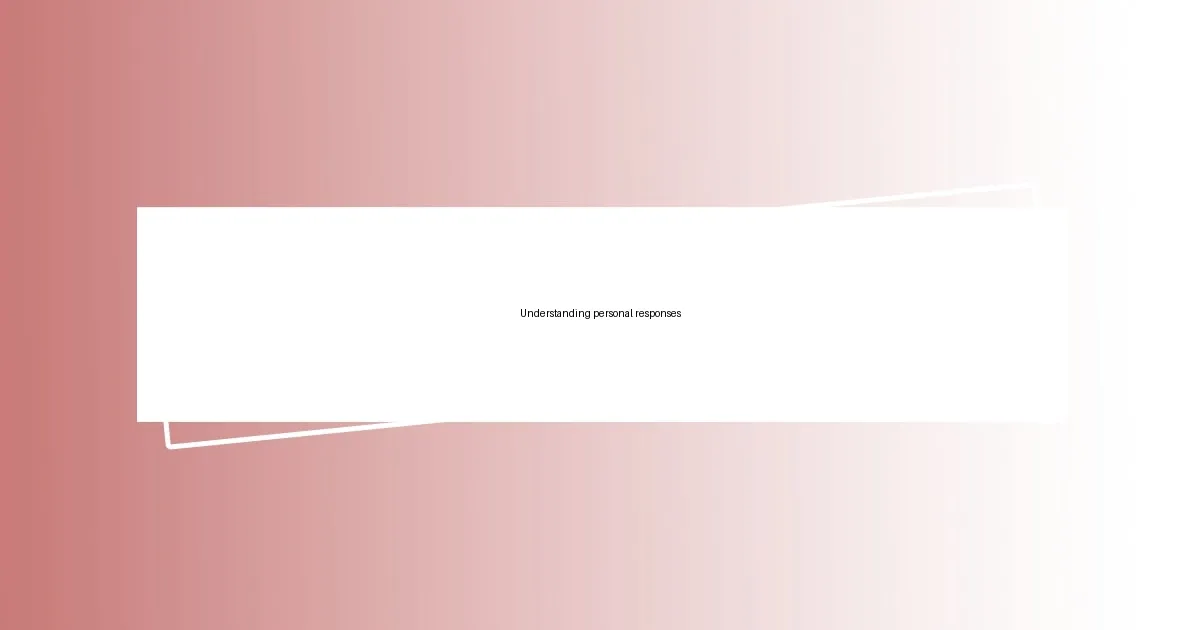Key takeaways:
- Recognizing unexpected challenges often starts with emotional cues, indicating areas that need attention and adaptability.
- A strategic mindset and proactive planning are essential to navigate unforeseen challenges effectively, transforming chaos into manageable tasks.
- Building a genuine support network fosters resilience and provides valuable insights during tough times, enhancing personal growth.
- Reflecting on challenges promotes continuous learning and the development of actionable plans that prioritize flexibility and self-care.

Recognizing unexpected challenges
Recognizing unexpected challenges often begins with a gut feeling. I’ll never forget the day I walked into a meeting, convinced that everything was well-prepared, only to be blindsided by a last-minute project change. Have you ever felt that moment of realization where you know something isn’t right? It’s unsettling and can leave you questioning your readiness.
Sometimes, unexpected challenges manifest as subtle shifts in your daily routine. I recall a time when a close colleague unexpectedly took leave, leaving my workload heavier than I anticipated. Initially, I underestimated the impact of their absence, thinking I could manage. But that’s when I truly learned the importance of adaptability; recognizing the challenge wasn’t just about the increased workload but also understanding how to reprioritize my tasks effectively.
Emotional clues can also point to these challenges. I remember feeling a surge of anxiety when a project I was confident about suddenly grew more complex due to factors outside my control. It was at that moment I understood that my emotional reactions—my stress and concern—were indicators of an unseen challenge that needed addressing. Have you considered how your feelings might signal when something unexpected is on the horizon?

Understanding personal responses
Understanding personal responses can often reveal how we process difficulties that arise unexpectedly. I remember a time when I faced a sudden budget cut during a project I was passionate about. The initial shock quickly morphed into curiosity about how to creatively stretch resources. This experience taught me that my first reaction—anxiety—was just a barrier I had to push through to find innovative solutions.
Over the years, I’ve learned that my personal responses can shift dramatically based on my mood and perspective. For example, after receiving critical feedback on a project, I initially felt defensive. However, after some reflection, I recognized that this feedback was a chance for growth. I found that embracing my vulnerabilities instead of shying away from them made me more resilient in facing similar challenges.
It’s fascinating how often our emotional reactions can guide us toward understanding unexpected challenges. I recall feeling a deep sense of frustration when a crucial vendor failed to deliver on time. Instead of letting it consume me, I took a step back to analyze why this setback affected me so much. This self-awareness helped me realize that my fear of failure was a prominent influence in my response, ultimately pushing me to develop better contingency plans for the future.
| Emotional Response | Personal Insight |
|---|---|
| Anxiety | Initially feeling overwhelmed can lead to innovative problem-solving. |
| Defensiveness | Critical feedback can be a catalyst for growth when approached positively. |
| Frustration | Understanding personal fears can lead to better preparation in future challenges. |

Developing a strategic mindset
Developing a strategic mindset
Adopting a strategic mindset is crucial when confronted with unforeseen challenges. I vividly remember a project where everything seemed to spiral out of control due to unexpected team departures. Instead of panicking, I paused to evaluate my options, which allowed me to reassess my team’s strengths and quickly reorganize our approach. This experience taught me that a calm, strategic overview can transform chaos into a well-planned initiative.
- Embrace flexibility: Allow room for adjustments in your plans as new information arises.
- Identify resources: Knowing what tools and people you can leverage is key.
- Seek long-term solutions: Focus not just on immediate fixes but also on building robust strategies that withstand future unpredictability.
A strategic mindset also incorporates proactive planning. There was a time when I spotted a potential shift in market trends weeks before a presentation. By anticipating audience questions and preparing alternative strategies, I felt more confident and ready. This approach not only lessened my anxiety but also positioned me as a reliable source in the conversation, showing the power of foresight.

Employing problem-solving techniques
Facing unexpected challenges always pushes us to think creatively, and I’ve found that employing problem-solving techniques can be a game-changer. For instance, when I encountered a technology failure just before a major presentation, I instinctively gathered my team to brainstorm solutions. This collaborative approach not only salvaged the situation but also fostered an environment of shared ownership, reminding me of the power of teamwork in problem-solving.
I remember another instance when unexpected client feedback derailed our project timeline. Initially, it felt overwhelming, and my mind raced with all the potential repercussions. However, I took a moment to regroup and implemented a structured feedback analysis. By breaking down the client’s concerns into actionable items, we not only addressed the immediate issues but also strengthened our relationship with the client in the long run.
Sometimes I wonder, what if I hadn’t embraced a proactive problem-solving mindset? During a challenging phase of my career, I turned to visualization techniques, imagining the steps needed to overcome difficulties. This practice not only provided clarity but also reduced my anxiety. Visualizing solutions allowed me to walk through hypothetical scenarios and prepare mentally for various outcomes, transforming a daunting challenge into a series of manageable steps.

Building a support network
Building a support network is absolutely essential in navigating unexpected challenges. I once found myself in a situation where I was overwhelmed with responsibilities and needed guidance. That’s when I reached out to former mentors and colleagues, and what came from those conversations was invaluable. They not only offered advice but also shared their own experiences, leaving me feeling more grounded and understood. Isn’t it amazing how connecting with others can change your perspective?
It’s interesting how the right connections can surface when you least expect them. During a particularly stressful period, I attended a local networking event almost reluctantly. To my surprise, I met an old friend who had undergone similar challenges and could empathize deeply. We quickly fell into a candid discussion about our struggles. That night, I gained not only professional insights but also a friendship I didn’t realize I desperately needed. Don’t you think the universe has a way of providing exactly what we need when we step out of our comfort zones?
When building a support network, I’ve learned it’s not just about professional contacts; it’s about fostering genuine relationships. I’ve made it a habit to check in on my connections regularly, even when I don’t need anything. This approach creates a sense of reciprocity – a give-and-take that proves invaluable in tough times. It’s a reminder that when the chips are down, those with whom I’ve nurtured relationships are often the first to rally around me. How has reaching out to your network made a difference in your life?

Reflecting on learned lessons
Reflecting on the lessons learned from unexpected challenges is a crucial part of growth, and I often find myself revisiting those moments. For example, during a significant project failure, I discovered how vital it is to embrace vulnerability. Admitting my mistakes not only allowed me to learn but also encouraged my team to share their struggles openly. Isn’t it fascinating how transparency cultivates trust within a group?
One particularly enlightening experience occurred when I faced a tight deadline that I ultimately couldn’t meet. At first, I was filled with disappointment, but I soon recognized this setback as an opportunity to evaluate my time management skills. I initiated a review process that clarified my priorities and helped me better allocate resources. In hindsight, that difficult period paved the way for a much more efficient workflow. Have you ever found a silver lining in a setback that changed your approach?
As I reflect on these challenges, I’m reminded of the importance of resilience. There have been moments when I’ve felt like giving up, but each time I persevered, I emerged stronger and more prepared for future hurdles. I realized that every challenge is a lesson package, waiting to be unpacked. It’s a remarkable feeling to know that even in adversity, I can find purpose and strength—how do you transform your struggles into stepping stones?

Implementing future action plans
Implementing future action plans requires a thoughtful approach grounded in the experiences we’ve had. After facing a particularly daunting challenge in my career, I realized the significance of creating actionable steps rather than just vague ideas. I began breaking down my goals into smaller, more manageable tasks. This method not only made the process feel less overwhelming but also kept me motivated as I celebrated each small victory. Have you ever noticed how progress, no matter the size, can spark renewed energy?
There was a time when I was overwhelmed by competing priorities in my personal and professional life. In response, I devised a simple but effective plan to prioritize my tasks. I started using a digital task manager to visualize my workload and set realistic deadlines. It felt liberating to have clarity, and unexpectedly, I found that I was able to dedicate more time to self-care. Isn’t it empowering to create a structure that actually enhances your life instead of detracting from it?
As I reflect on these experiences, I understand that flexibility is just as critical as planning. Life is unpredictable, and my future action plans often needed tweaking along the way. For instance, after implementing my initial plan, I hit a roadblock that required a pivot in strategy. Instead of seeing this as failure, I embraced the shift, recognizing that adaptability is a strength. What strategies do you use when your best-laid plans go awry? Exploring those alternatives can lead to unexpected avenues of success!














